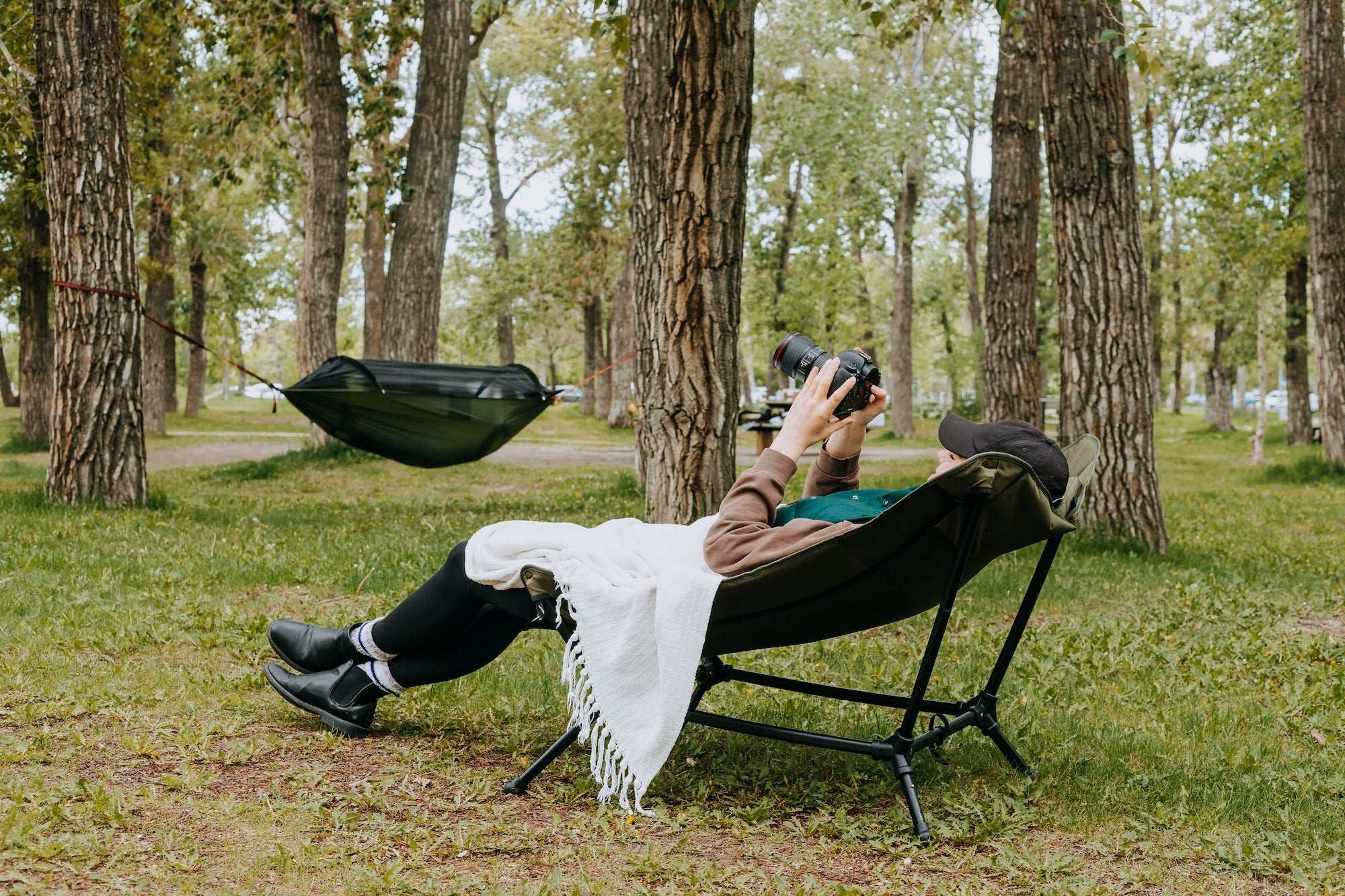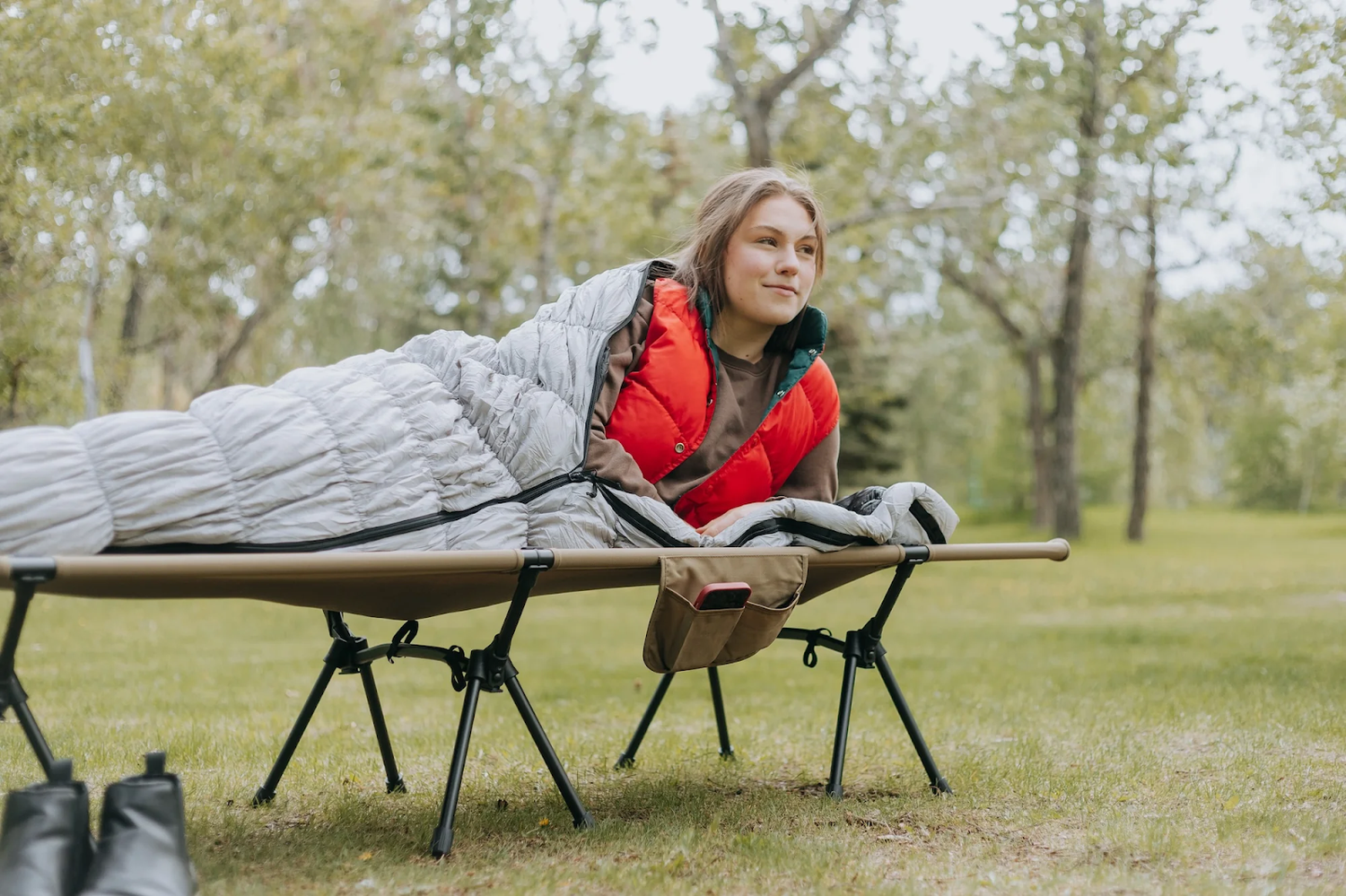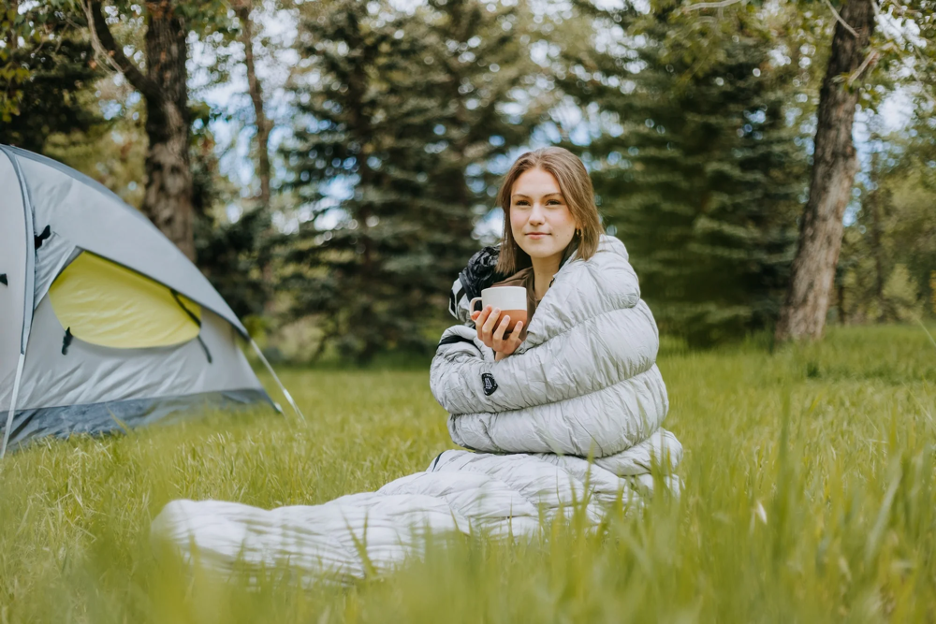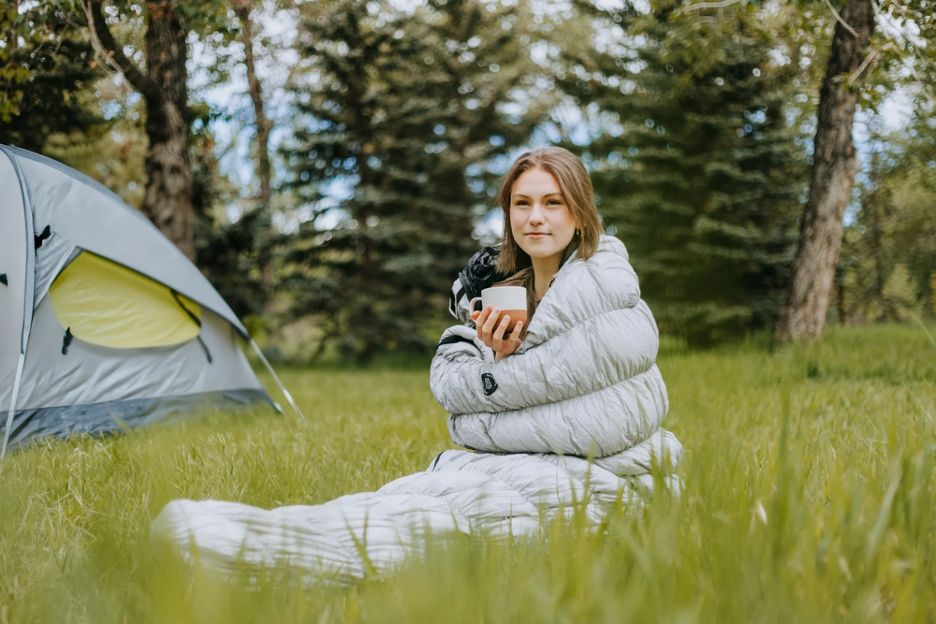What’s the Secret to a Cozy Night’s Sleep While Camping?
Camping is an incredible way to experience nature and disconnect from the hustle and bustle of everyday life. However, one of the most common challenges for campers is ensuring a good night’s sleep. After a long day of outdoor activities, it can be tough to rest comfortably in the wild without the luxury of a bed. But fear not! The secret to a cozy night’s sleep lies in choosing the right gear and creating a comfortable setup that suits your style. Whether you're sleeping in a double sleeping bag, a hammock, or a hammock tent, there are multiple ways to enhance your comfort while camping.
In this article, we'll explore some of the best sleep solutions for camping and offer tips for a restful night under the stars.
1. Choose the Right Sleeping Bag

A good sleeping bag is the cornerstone of a comfortable camping experience. Without the right one, you’ll be left shivering and restless throughout the night. When picking out a sleeping bag, it's important to consider factors such as temperature ratings, shape, and materials.
-
Temperature Rating: Most sleeping bags come with a temperature rating, which indicates the lowest temperature at which the bag will keep you comfortable. If you're camping in colder weather, choose a sleeping bag with a lower temperature rating. For warmer months, a sleeping bag with a higher rating will prevent overheating.
-
Shape and Space: Sleeping bags are typically available in mummy and rectangular shapes. Mummy sleeping bags are more compact and efficient in keeping heat close to your body, making them great for colder weather. Rectangular bags, on the other hand, provide more room to move but may not insulate as well. If you're camping with a partner, a double sleeping bag could be an excellent choice. It gives you the space to sleep comfortably while still retaining warmth, which is crucial for colder nights.
-
Material: Sleeping bags come in two main insulation types—down and synthetic. Down sleeping bags are lighter, more compressible, and offer better warmth-to-weight ratios. Synthetic bags are bulkier but tend to retain warmth even when wet, making them better suited for wet or humid conditions.
A good-quality sleeping bag will help ensure that you’re warm and cozy throughout the night, allowing you to wake up feeling rested and ready to take on another day of adventure.
2. Try Sleeping in a Hammock

For those who want to try something a little different, sleeping in a hammock offers a unique, comfortable alternative to traditional tents. Hammocks allow you to sleep elevated off the ground, which means you're less likely to encounter uncomfortable rocks, uneven ground, or dampness. Plus, sleeping in a hammock can feel incredibly relaxing.
Here are some benefits of using a hammock while camping:
-
Better Air Circulation: Hammocks tend to be well-ventilated, which can prevent overheating during warm nights. The gentle swaying motion can also have a calming effect, making it easier to fall asleep.
-
Comfort and Support: Sleeping in a hammock provides natural support for your body. It helps distribute your weight evenly, alleviating pressure points and preventing aches and pains that might come from sleeping on hard ground.
-
Protection from Bugs: Many hammocks come with built-in mosquito nets or the option to add one, which helps keep annoying insects away while you sleep. This is especially useful if you’re camping in areas where mosquitoes and other pests are prevalent.
If you decide to go the hammock route, make sure to invest in an insulated pad or underquilt for additional warmth, as the air underneath the hammock can be chilly, especially during cooler nights. A hammock rainfly is also a good idea to protect you from unexpected rain.
3. Hammock Tents: The Best of Both Worlds

If you love the idea of sleeping in a hammock but want more protection from the elements, a hammock tent could be the ideal solution. A hammock tent combines the comfort of a hammock with the shelter of a traditional tent. This hybrid option is perfect for campers who want the best of both worlds.
Here’s why hammock tents are gaining popularity:
-
Elevated Sleep: Just like a traditional hammock, a hammock tent allows you to sleep off the ground, offering better insulation from cold, wet surfaces. This setup is especially useful when camping in damp conditions or areas with uneven terrain.
-
Protection from the Elements: A hammock tent provides full coverage from rain, wind, and insects. Many models come with a rainfly, bug net, and a solid outer shell, which makes it a great all-in-one shelter for unpredictable weather conditions.
-
Compact and Lightweight: Hammock tents are typically lighter than traditional ground tents, making them ideal for backpackers and minimalist campers. They are easy to set up and pack down, saving space and time when you're on the go.
To ensure maximum comfort in a hammock tent, don’t forget to bring an underquilt or sleeping pad for insulation. These additions help prevent the cold from seeping in from below and keep you warm throughout the night.
4. Extra Comfort Tips for Sleeping While Camping

In addition to selecting the right gear, there are several ways to enhance your camping sleep experience:
-
Use a Sleeping Pad: A sleeping pad adds extra insulation and cushioning, even when you’re using a sleeping bag or hammock. A good sleeping pad will prevent you from feeling the cold ground beneath you and provide additional comfort.
-
Dress for Success: Wear moisture-wicking layers that will keep you warm without causing you to overheat. Avoid cotton clothing, as it holds moisture and can make you cold when it gets damp. Instead, choose breathable fabrics like merino wool or synthetic materials.
-
Pick the Right Campsite: Your choice of campsite can make a big difference in the quality of your sleep. Look for a flat, dry spot to set up your sleeping arrangement. Avoid setting up near water sources or in areas prone to high winds. If you’re using a hammock, ensure that the trees you choose are sturdy and the right distance apart.
-
Bring a Pillow: While you may not be able to bring your usual pillow, a small camping pillow or stuff sack filled with clothes can provide the support your neck needs for a restful night.
Conclusion
Getting a cozy night’s sleep while camping is all about choosing the right gear for your preferences and the conditions you'll face. Whether you opt for a double sleeping bag for warmth and comfort, enjoy the gentle sway of a hammock, or prefer the all-in-one shelter of a hammock tent, there are plenty of ways to sleep soundly in the great outdoors. By carefully selecting your sleeping gear, dressing appropriately for the weather, and setting up your campsite with comfort in mind, you’ll be well on your way to waking up refreshed and ready for the next day’s adventure.





Leave a comment
All comments are moderated before being published.
This site is protected by hCaptcha and the hCaptcha Privacy Policy and Terms of Service apply.